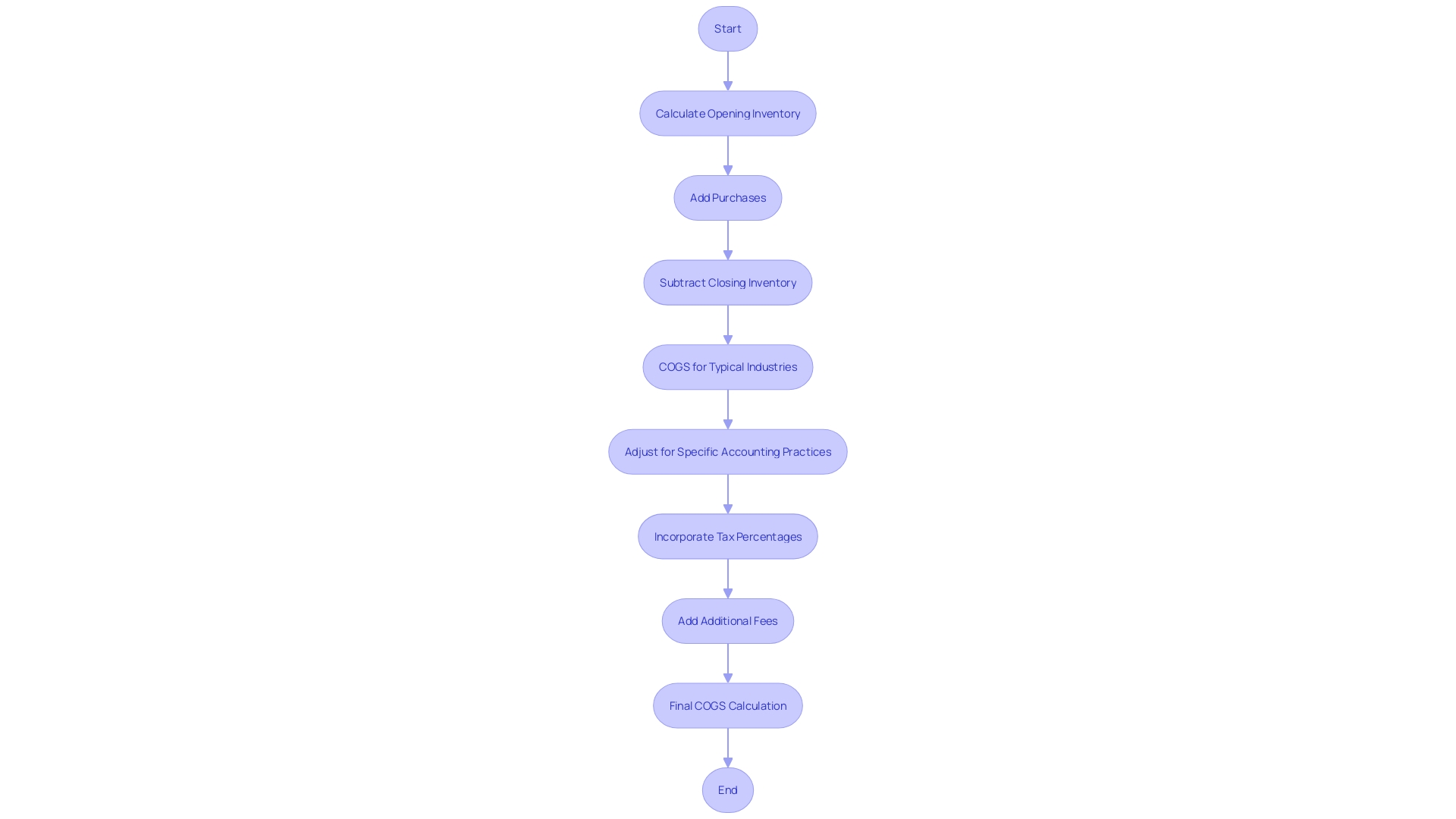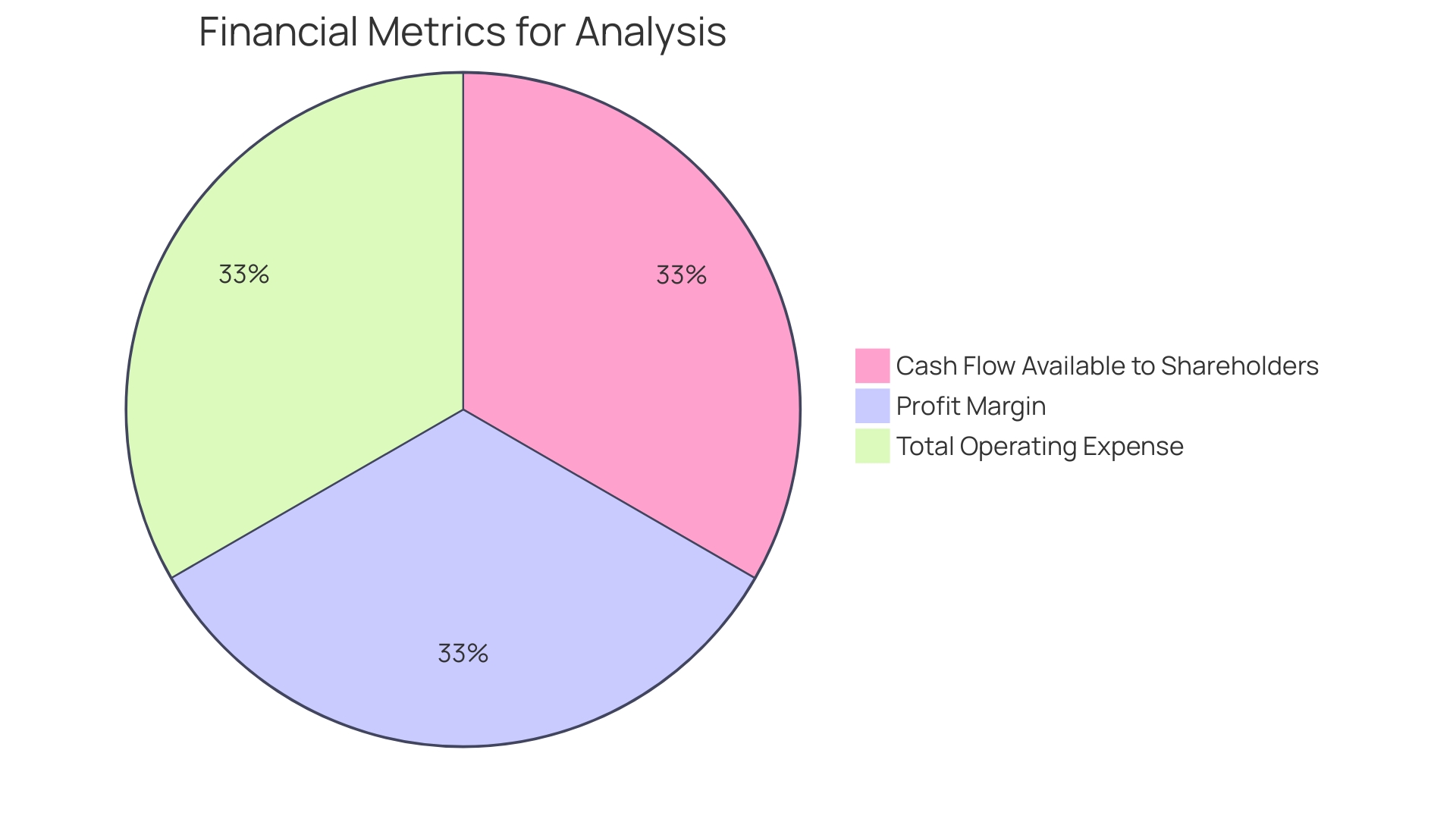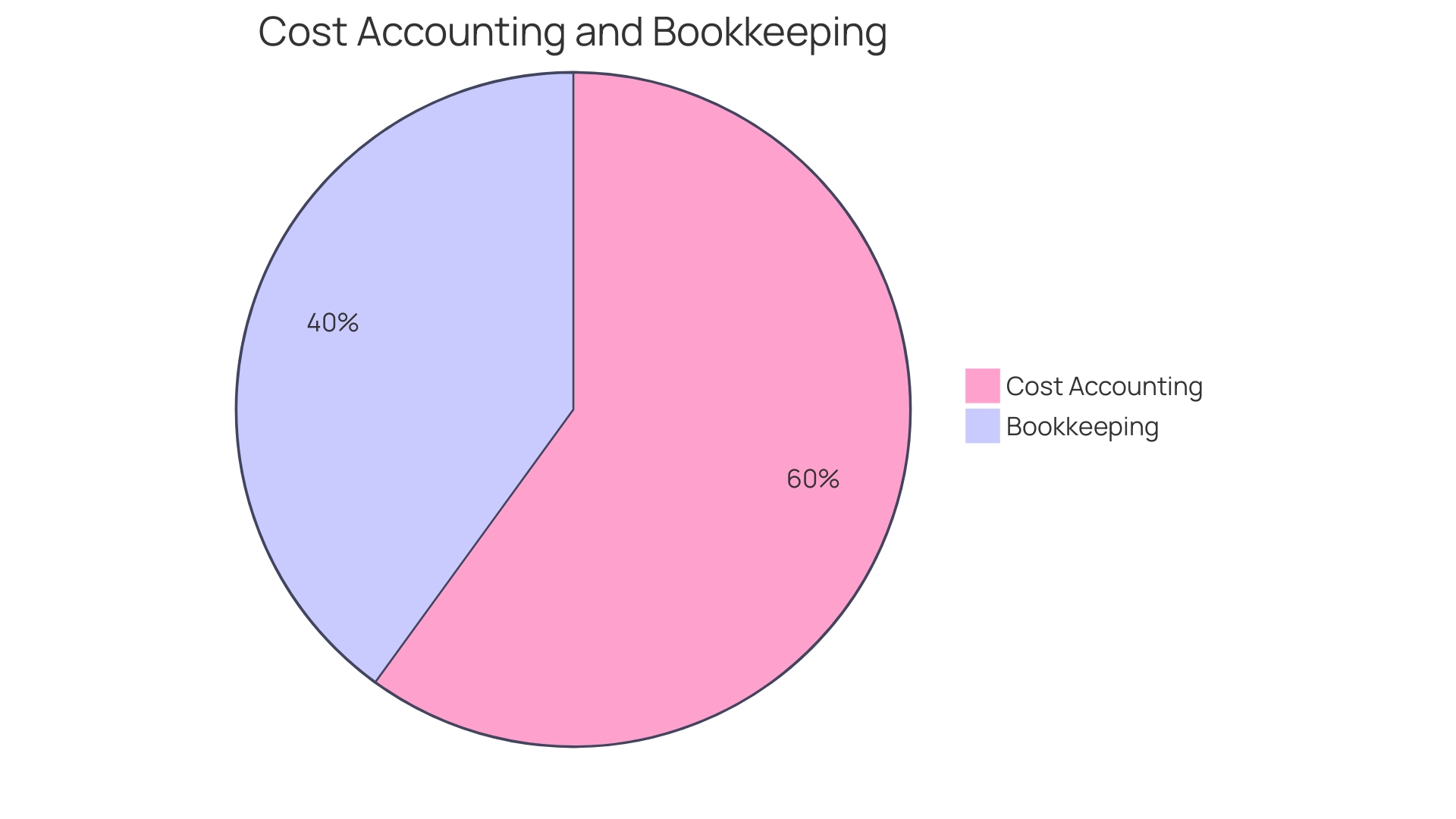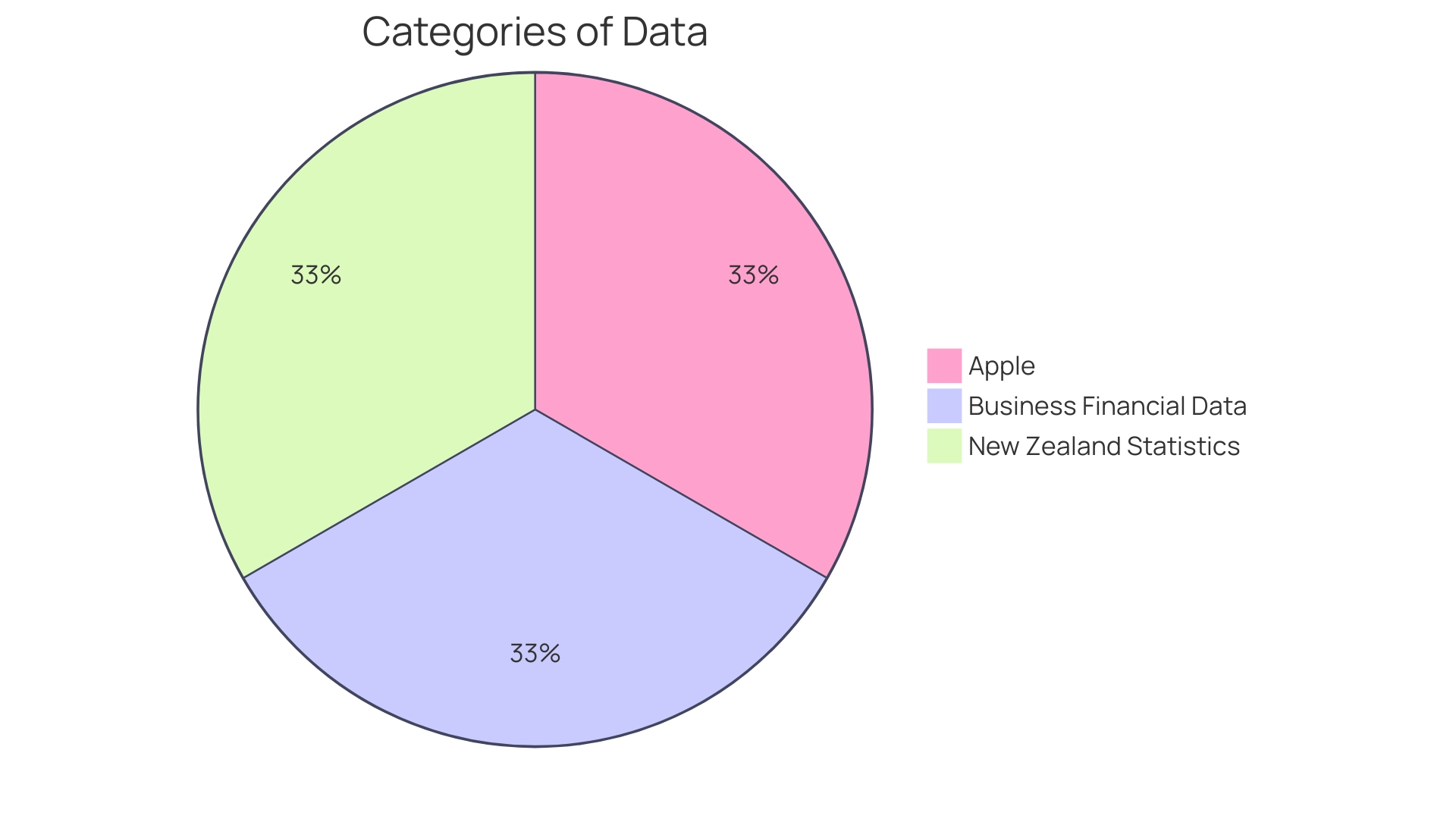Introduction
Understanding the intricacies of Cost of Goods Sold (COGS) is pivotal for any business focused on efficiency and profitability. In essence, COGS encapsulates the direct costs attributed to the creation of products or the delivery of services that a company offers. Insight into COGS is crucial for evaluating a company's gross profit, as it helps in identifying the true profitability of goods or services by subtracting these direct costs from sales revenue.
To delve deeper, let's consider the software industry, where companies like Monday.com have leveraged a thorough understanding of COGS to enhance their financial performance. They've grown efficiently and managed to achieve positive free cash flow despite market fluctuations. This is indicative of the profound impact that efficient COGS management can have on a company's ability to reinvest in growth and build shareholder value.
In a practical scenario, COGS is vital when conducting a cost-benefit analysis or when a CFO needs to manage cash flow effectively. For instance, a simple formula often used is: Gross Profit = Sales Revenue - COGS. Such calculations enable businesses to make informed decisions about pricing, investment, and operational changes to optimize performance.
It's important to note that while past financial data can guide future expectations, it is not a definitive predictor of success. As such, CFOs and financial managers must stay cognizant of how COGS affects overall financial health and adapt strategies accordingly to maintain a competitive edge.
What is Cost of Goods Sold (COGS)?
Understanding the intricacies of Cost of Goods Sold (COGS) is pivotal for any business focused on efficiency and profitability. In essence, COGS encapsulates the direct costs attributed to the creation of products or the delivery of services that a company offers. This includes not only the price of raw materials and direct labor but also encapsulates other direct expenses integral to the production process.
Insight into COGS is crucial for evaluating a company's gross profit, as it helps in identifying the true profitability of goods or services by subtracting these direct costs from sales revenue.
To delve deeper, let's consider the software industry, where companies like Monday.com have leveraged a thorough understanding of COGS to enhance their financial performance. They've grown efficiently and managed to achieve positive free cash flow despite market fluctuations. This is indicative of the profound impact that efficient COGS management can have on a company's ability to reinvest in growth and build shareholder value.
Gross margins, which are closely tied to COGS, have demonstrated their significance in the long-term profitability and valuation of companies, especially during times when investors prioritize revenue growth over profitability.
In a practical scenario, COGS is vital when conducting a cost-benefit analysis or when a CFO needs to manage cash flow effectively. For instance, a simple formula often used is: Gross Profit = Sales Revenue – COGS. Such calculations enable businesses to make informed decisions about pricing, investment, and operational changes to optimize performance.
It's important to note that while past financial data can guide future expectations, it is not a definitive predictor of success. As such, CFOs and financial managers must stay cognizant of how COGS affects overall financial health and adapt strategies accordingly to maintain a competitive edge.
Components of COGS
Cost of Goods Sold (COGS) is a fundamental component in the financial landscape of any business, directly impacting profitability. Understanding the intricacies of COGS is critical, as it includes the expenses directly tied to the production of goods or services a company offers. The core elements of COGS encompass:
-
Raw Materials: These are the expenses related to all materials that are directly utilized in the manufacturing of a product. This cornerstone of production costs can significantly influence the financial outcomes of the production process.
-
Direct Labor: This category covers the compensation of all personnel directly involved in the creation of the product, from assembly line workers to machine operators. Their wages are a direct reflection of the human capital involved in bringing a product to market.
-
Manufacturing Overhead: These are the indirect costs that are not directly traceable to product creation but are essential for the operation. These can include the utilities powering production facilities, rent for the manufacturing space, and depreciation of the equipment used – all pivotal in keeping the manufacturing process running smoothly.
-
Freight and Shipping: The logistics costs of moving raw materials to the production site and the finished product to the market are encapsulated here. This can range from local transport fees to international shipping charges, all of which add up to the total cost of delivering a product to the customer.
Incorporating a cost-aware culture within an organization is paramount. This includes considering cost as a crucial non-functional requirement in product development, akin to performance and reliability, as well as making cost management a shared responsibility across departments. Such an approach ensures that all aspects of production, including COGS components, are optimized for financial efficiency.
This holistic view of cost management is a strategic move that can yield significant benefits, as seen in the continuous efforts by leading players in the industry to refine their cost and usage data analysis, such as Microsoft's recent involvement with the FinOps Foundation.
Furthermore, in the dynamic realm of digital workplace management, companies like VOSS Solutions are pioneering new analytic capabilities to empower businesses to better manage and minimize costs associated with Unified Communications and collaboration networks. This is a testament to the evolving need for comprehensive cost analysis across various domains and the importance of having a clear understanding of COGS elements to navigate today's economic challenges.
Formula to Calculate COGS
Understanding the Cost of Goods Sold (COGS) is pivotal for businesses aiming to gauge their production costs accurately. COGS calculation is encapsulated in a formula:
COGS = Opening Inventory + Purchases - Closing Inventory
By integrating the initial inventory value with purchases made throughout a period and then subtracting the final inventory worth, companies can pinpoint the total cost associated with goods sold within that timeframe. This equation not only reflects the direct costs tied to product creation, such as materials and direct labor, but also adapts to the nuances of various industries and their accounting practices.
For instance, in a dynamic sector like retail, where inventory turnover is a key performance indicator, COGS serves as an essential measure. It provides insights into the cost structure and profitability of the goods sold, thus shaping pricing strategies and financial planning. Moreover, businesses dealing with complex taxation systems, as in Brazil's retail landscape, can modify this formula to incorporate tax percentages and additional fees, ensuring accurate cost assessments and compliance with financial regulations.
In application, a paint store may use a tailored version of the COGS formula to accommodate specific tax rates and freight costs, while a software company might focus on how customer success costs are classified within gross margins. These adaptations underscore the versatility of the COGS formula, making it an indispensable tool for financial analysis across diverse business models.
As recent financial reports exemplify, understanding and effectively managing COGS can significantly impact a company's bottom line. For example, The Home Depot® adjusted its COGS in response to macroeconomic factors, competitive pressures, and the acquisition of SRS Distribution Inc. These adjustments are reflected in their operating margins and overall financial performance, demonstrating the real-world implications of meticulous cost accounting.

Difference Between COGS and Operating Expenses
While direct costs such as materials and labor are captured in the Cost of Goods Sold (COGS), the multifaceted world of operating expenses details the indirect costs vital to a company's day-to-day functionality. These expenses encompass a variety of outlays, from office lease payments and utility bills to the salaries of administrative personnel and costs related to marketing initiatives. As opposed to COGS which is directly subtracted from sales revenue to arrive at the gross profit, operating expenses are deducted from gross profit to determine the net profit, providing a more comprehensive view of a company's financial health.
For instance, Monday.com's approach to achieving impressive gross margins illustrates the significance of managing these operating expenses efficiently. By focusing on gross margins, they have strategically directed their spending, resulting in a swift transition to becoming free cash flow positive, particularly crucial when their growth pace moderated. This underscores the importance of not only generating revenue but also the quality of that revenue in terms of profitability and the potential for sustainable cash flows.
Moreover, the granularity of cost accounting is evident in industries with complex operational structures like steel production, where standard cost accounting can pinpoint variances between expected and actual costs. This meticulous attention to detail in financial management is critical, as illustrated by the diverse approaches to classifying costs within gross margins, such as the debated placement of customer success expenses. The materiality of each expense item and its impact on the financial statements cannot be overstated, requiring astute judgment in determining their allocation either directly to the profit and loss statement or initially to the balance sheet.
Understanding the nuances between balance sheet items and immediate expenses is vital, as evidenced by the construction industry, where the differentiation shapes the perception of a company's financial stability. This distinction is not merely academic but has real-world implications, influencing investment decisions and the strategic direction of businesses aiming for long-term profitability and shareholder value.

Examples of COGS vs Operating Expenses
Consider a bakery as a case study to understand the distinct roles of Cost of Goods Sold (COGS) and operating expenses in financial analysis. The direct expenses such as the cost of ingredients, wages of bakers, and packaging materials fall under COGS. These are integral to the production of bread.
Conversely, operating expenses include the bakery's rent, the salaries of the sales team, marketing costs, and utilities. These expenses are necessary for the day-to-day functioning but not directly tied to the production process. Recognizing the difference between these two types of costs is vital for precision in financial reporting and strategic decision-making.
In the context of software companies like Monday.com, efficient growth and the ability to generate free cash flow are closely monitored metrics. As revenue alone does not equate to profitability, understanding and managing COGS and operating expenses can significantly impact a company's financial health and shareholder value.

Importance of Accurate COGS Calculation
Understanding the Cost of Goods Sold (COGS) is a linchpin in the financial mechanics of a business, impacting several areas from the price tags to the tax bills. Here's why COGS warrants meticulous attention:
- Gross Profit Calculation: COGS is subtracted from sales revenue to arrive at gross profit, a vital metric signifying the profitability of selling goods or services. For example, a car manufacturer subtracts the cost of steel and wages for assembly line workers, which are direct costs, to calculate its gross profit.
- Informed Pricing Strategy: Precise COGS calculation aids in setting prices that not only cover costs but also ensure business profitability. This is akin to the algorithms used by a paint store in Brazil, where the cost price formula includes unit price, taxes, and freight, adapting to the nation's complex tax system.
- Enhanced Financial Reporting: COGS figures prominently in an income statement, offering transparency into a company's cost structure and operational efficiency.
- Tax Deductions: COGS deductions can significantly reduce a company's taxable income. As each percentage point matters, an insurance firm, for instance, could write new policies at a combined ratio of 120%—where typically 96%-97% is the norm—and still see improved financial results, thanks to the spreading of fixed costs over a larger base.
With these crucial factors in play, a thorough grasp of COGS is indispensable for CFOs to steer their enterprises towards fiscal prudence and competitive edge.
Common Mistakes in COGS Calculation and Their Impact
Cost of Goods Sold (COGS) is a critical financial metric that demands precision. However, a few common missteps can distort this figure, leading to misleading gross profit calculations. A key pitfall is overlooking direct production costs, which skews gross profit by undervaluing COGS.
Similarly, inaccuracies in inventory valuation, including opening and closing figures, can upend COGS, affecting the entire financial statement.
The allocation of manufacturing overhead is another area prone to errors. Without proper allocation, the true production costs remain hidden, painting an incomplete financial picture. Additionally, inventory shrinkage, such as losses from theft or spoilage, must be factored in to avoid an overstated COGS and a misrepresented profitability analysis.
These mistakes are not just theoretical. Real-world consequences of such errors are exemplified by an incident where a small decimal error in fund index calculations led to a staggering loss of 900 million. Furthermore, spreadsheets, which are often the backbone of financial analysis, are notorious for containing errors.
Studies have found that a startling 90% of spreadsheets with over 150 rows harbor errors, emphasizing the need for thorough verification and validation.
To fortify COGS accuracy, it is imperative to remove errors and structure data efficiently. This can prevent issues such as the 'bid/ask bounce' effect, where data is skewed due to frequent price fluctuations. Ensuring data comparability is equally vital as it underpins investor decisions and capital allocation.
As industry research indicates, the impact of cognitive load on spreadsheet users is akin to the concentration required for a medical diagnosis, suggesting that the risk of error is high when attention to detail is critical.
By acknowledging these pitfalls and implementing rigorous review processes, businesses can achieve more accurate financial analyses and make well-informed decisions, thus fostering a stable and growth-oriented financial environment.

Conclusion
Understanding and effectively managing Cost of Goods Sold (COGS) is crucial for business efficiency and profitability. COGS encapsulates direct costs and helps determine the true profitability of goods or services. Efficient COGS management has a profound impact on a company's ability to reinvest in growth and build shareholder value.
Calculating gross profit by subtracting COGS from sales revenue enables informed decisions about pricing, investment, and operational changes. CFOs must adapt strategies to maintain a competitive edge.
COGS includes raw materials, direct labor, manufacturing overhead, and freight and shipping. Optimizing all aspects of production and incorporating a cost-aware culture are crucial for financial efficiency.
Accurate COGS calculation is essential for calculating gross profit, informing pricing strategies, enhancing financial reporting, and reducing taxable income. CFOs must grasp COGS to steer their enterprises towards fiscal prudence and a competitive edge.
Managing operating expenses efficiently is vital for impressive gross margins and sustainable cash flows. Differentiating between COGS and operating expenses is crucial for precise financial reporting and strategic decision-making.
Avoiding common mistakes in COGS calculation, such as overlooking direct production costs and inaccuracies in inventory valuation, is necessary to prevent misleading financial analyses. Thorough verification and validation, along with efficient data structuring, fortify COGS accuracy.
By understanding the importance of COGS and avoiding common mistakes, businesses achieve more accurate financial analyses and make well-informed decisions. This fosters a stable and growth-oriented financial environment.




